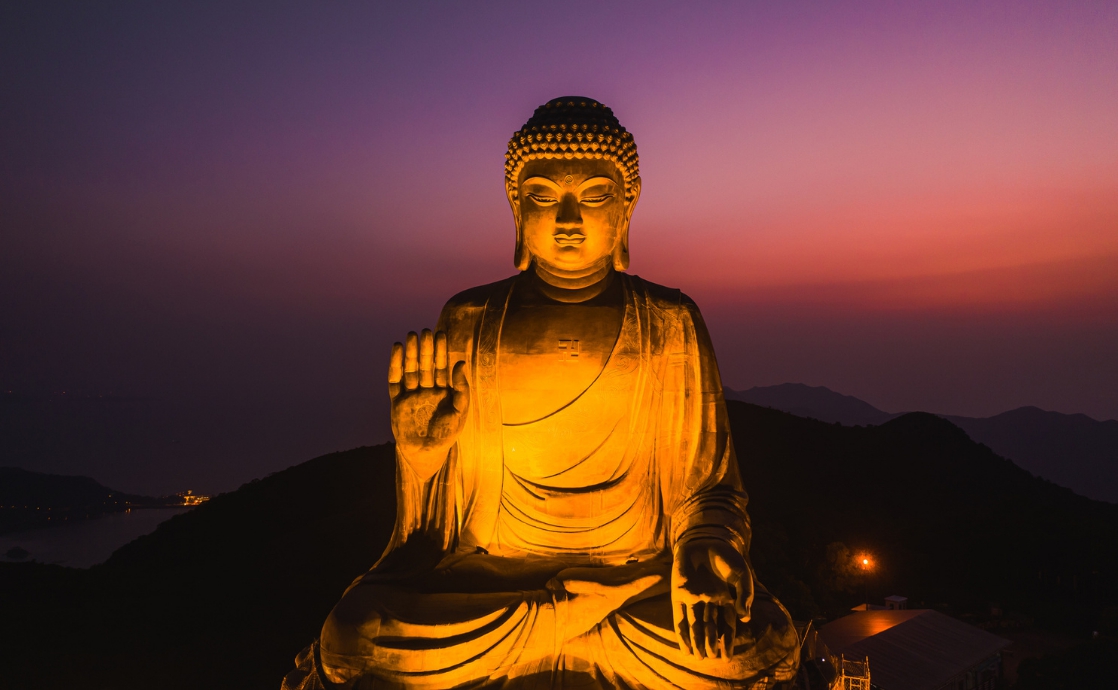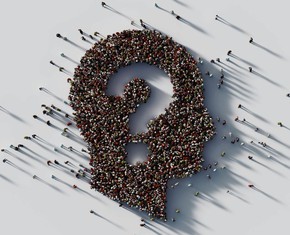The views expressed in our content reflect individual perspectives and do not represent the authoritative views of the Baha'i Faith.
Do Buddhists await an “end time,” too? While we in the West most likely think of that concept as a Christian one, it permeates all of the world’s great Faiths.
In the Cakkavatti Sihanada Sutta, part of the Buddhist Long Discourses, we learn that in the end times the ten courses of Buddhist moral order will decline and be replaced by ten immoral ones: violence; murder; theft; lying; evil, abusive andidle talk; covetousness and ill will; greed; and lust. The verses say that during these times:
… there will be no word for ’moral’, so how can there be anyone who acts in a moral way? Those people who have no respect for mother or father, for ascetics and Brahmins, for the head of the clan, will be the ones who enjoy honor and prestige. Just as it is now the people who show respect for mother and father, for ascetics and Brahmins, for the head of the clan, who are praised and honored, so it will be with those who do the opposite.
RELATED: Why We Need the Buddha
At that time the text says, a new Buddha called Maitreya (Sanskrit), Metteyya (Pāli) – or in some Mahayana texts, Amitabha, will appear:
… there will arise in the world a Blessed Lord, an Arahant [one who has reached the highest stage of enlightenment] fully-enlightened Buddha named Metteyya, endowed with wisdom and conduct, a Well-Farer, Knower of the worlds, incomparable Trainer of men to be tamed, Teacher of gods and humans, enlightened and blessed, just as I am now. He will thoroughly know by his own super-knowledge, and proclaim, this universe with its devas and maras [gods and rulers of desire] and Brahmas [gods that think they are more powerful than they are], its ascetics and Brahmins, and this generation with its princes and people, just as I do now. He will teach the Dhamma [eternal principles of religion], lovely in its beginning, lovely in its middle, lovely in its ending, in the spirit and in the letter, and proclaim, just as I do now, the holy life in its fullness and purity. He will be attended by a company of thousands of monks, just as I am attended by a company of hundreds.
When will this happen? Buddhists are of divided mind. There are verses in the Buddhist literature that indicate that the Maitreya is near. A verse from the Abhidharmakosha in The Treasury of Abhidharma, written by one of the greatest Buddhist authorities in ancient India, Vasubandhu, reads:
The monks and stream attainers (followers) will be strong in their union with Dharma [the Buddha’s teachings] for 500 years after the Blessed One’s [Sidhartha Buddha] Parinirvana [death and final liberation, nirvana]. In the second 500 years they will be strong in meditation; in the third period of 500 years they will be strong in erudition. In the fourth 500 years period they will only be occupied with gift giving. The final or fifth period of 500 years will see only fighting and reproving among the monks and followers. The pure Dharma will then become invisible (disappear). – 4.12c. III. p. 41.
Note that the sum of these periods is 2500 years – and since the Buddha died sometime around 500BC, that brings us to today.
Maitreya’s coming is also said by many Buddhist commentators to be characterized by a number of physical events. For example, the oceans are predicted to decrease in size, allowing Maitreya to traverse them freely. That event, they say, will also allow the unveiling of the “true” dharma to the people, in turn allowing the construction of a new world.
The Baha’i teachings maintain that Baha’u’llah, the prophet and founder of the Baha’i Faith, has fulfilled the prophecies of the Buddha’s return – as well as the prophecies of the revered founders of the world’s religions:
The holy Manifestations Who have been the Sources or Founders of the various religious systems were united and agreed in purpose and teaching. Abraham, Moses, Zoroaster, Buddha, Jesus, Muhammad, the Bab and Baha’u’llah are one in spirit and reality. Moreover, each Prophet fulfilled the promise of the One Who came before Him and, likewise, Each announced the One Who would follow. – Abdu’l-Baha, The Promulgation of Universal Peace.
So we come back to Daniel, who explained that during the end times people would move easily to and fro as if the oceans that separate people had shrunk – and whose prophecy that knowledge would be greatly increased in the end times makes its transmission possible (through today’s technology) to many thousands of followers, not just hundreds.
As we have seen, the largest religions on Earth reveal to us a common eschatology. It is the plan of every religion to bring us all together, to judge between us, to build the kingdom of God on Earth, or, as the Buddhists would say, to refashion morals conducive to the Way.
The beginnings of this coming together, Baha’is believe, is happening now:
Look ye not upon the present, fix your gaze upon the times to come. In the beginning, how small is the seed, yet in the end it is a mighty tree. Look ye not upon the seed, look ye upon the tree, and its blossoms, and its leaves and its fruits. Consider the days of Christ, when none but a small band followed Him; then observe what a mighty tree that seed became, behold ye its fruitage. And now shall come to pass even greater things than these, for this is the summons of the Lord of Hosts, this is the trumpet-call of the living Lord, this is the anthem of world peace, this is the standard of righteousness and trust and understanding raised up among all the variegated peoples of the globe; this is the splendour of the Sun of Truth, this is the holiness of the spirit of God Himself. This most powerful of dispensations will encompass all the earth, and beneath its banner will all peoples gather and be sheltered together. – Abdu’l-Baha, Selections from the Writings of Abdu’l-Baha.
RELATED: A New Type of Civilization
Somewhat paradoxically, because the Force that creates and directs life is all-embracing, the push toward religious unity and fulfillment may seem somewhat secular – and necessarily so. It is not that one religion with all its cultural trappings will conquer all. A whole new order is being created and slowly discovered. We are all being driven toward a unity that only gradually will reveal its ancient and new religious underpinnings.
To get from where we are to where we need to be, however, will require considerable awakening. We are like the householder in the parable of Jesus that is asleep when the Promised One comes like a thief in the night. We may have entered a new age, but our sleep makes us unaware of it. The thief has come, taken what (or who) he wanted, and left while we dream on.
The Baha’i teachings say that although its light is still faint, the dawn has broken and a new day is before us. Old social orders are being rolled up daily and new, usually imperfect alternatives, are being laid out in their stead.
We could, however, become more conscious of the ongoing divine process and build more intelligently.
To truly see where we are means understanding more clearly how we got here, how all religions have always been part of one common plan – and why, even though all religions have taken part in that plan, no past religious system adequately reflects the global processes now at work.
This brings us to the major points of this series of essays: to look at the role of past religions, to learn to see them as part of a common plan, and to fully comprehend how they must evolve into something greater. In the next installments, we’ll examine and explore those trenchant themes. Please join us.
[Note: Because of a publishing error, this article was not included in its series in the correct order. We have now corrected the numbering so those who wish to read the entire series in sequence can do so. BahaiTeachings.org apologizes for the error.]
















Comments
Sign in or create an account
Continue with Googleor